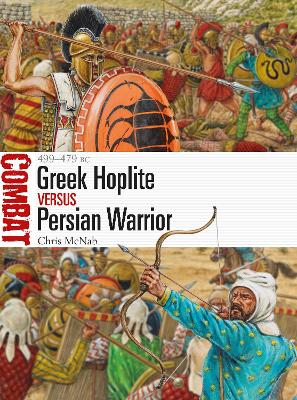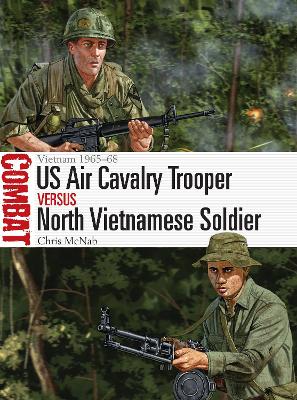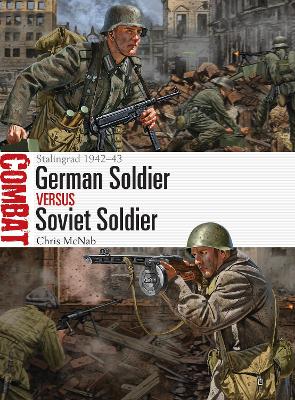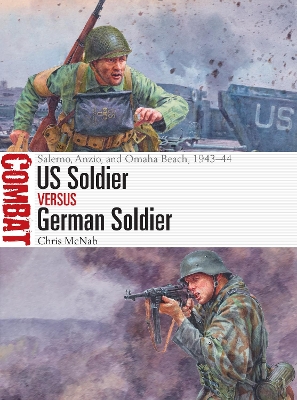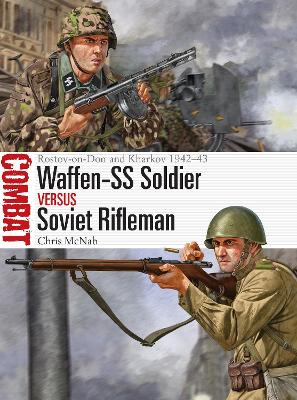Combat
1 primary work • 5 total works
Book 31
The Greco-Persian Wars (499-449 BCE) convulsed Greece, Asia Minor and the Near East for half a century. Through a series of bloody invasions and pitched battles, the mighty Persian Empire pitted itself against the smaller armies of the Greeks, strengthened through strategic alliances. This epic conflict also brought together...Read more
The Greco-Persian Wars (499-449 BCE) convulsed Greece, Asia Minor and the Near East for half a century. Through a series of bloody invasions and pitched battles, the mighty Persian Empire pitted itself against the smaller armies of the Greeks, strengthened through strategic alliances. This epic conflict also brought together two different styles of warfare: the Greek hoplite phalanx and the combined spear and projectile weapon-armed Persian infantry.
Analysing the battles of Marathon, Thermopylae and Plataea from the eyes of a soldier, this study explores the experience of front-line combat during the first two decades of the Greco-Persian Wars. Fully illustrated with modern photographs and archival images, and drawing directly on primary sources and the most authoritative recent research, this is the enthralling story of the fighting men of Greece and Persia and the tactics and technologies they employed.
Analysing the battles of Marathon, Thermopylae and Plataea from the eyes of a soldier, this study explores the experience of front-line combat during the first two decades of the Greco-Persian Wars. Fully illustrated with modern photographs and archival images, and drawing directly on primary sources and the most authoritative recent research, this is the enthralling story of the fighting men of Greece and Persia and the tactics and technologies they employed.
The tactics and technologies of modern air assault – vertical deployment of troops by helicopter or similar means – emerged properly during the 1950s in Korea and Algeria. Yet it was during the Vietnam War that helicopter air assault truly came of age and by 1965 the United States...Read more
The tactics and technologies of modern air assault – vertical deployment of troops by helicopter or similar means – emerged properly during the 1950s in Korea and Algeria. Yet it was during the Vietnam War that helicopter air assault truly came of age and by 1965 the United States had established fully airmobile battalions, brigades, and divisions, including the 1st Cavalry Division (Airmobile).This division brought to Vietnam a revolutionary new speed and dexterity in battlefield tactics, using massed helicopters to liberate its soldiers from traditional overland methods of combat manoeuvre.
However, the communist troops adjusted their own thinking to handle airmobile assaults. Specializing in ambush, harassment, infiltration attacks, and small-scale attrition, the North Vietnamese operated with light logistics and a deep familiarity with the terrain. They optimized their defensive tactics to make landing zones as hostile as possible for assaulting US troops, and from 1966 worked to draw them into ‘Hill Traps’, extensive kill zones specially prepared for defence-in-depth. By the time the 1st Cavalry Division (Airmobile) withdrew from Vietnam in 1972, it had suffered more casualties than any other US Army division.
Featuring specially commissioned artwork, archive photographs, and full-colour battle maps, this study charts the evolution of US airmobile tactics pitted against North Vietnamese countermeasures. The two sides are analysed in detail, including training, logistics, weaponry, and organization.
However, the communist troops adjusted their own thinking to handle airmobile assaults. Specializing in ambush, harassment, infiltration attacks, and small-scale attrition, the North Vietnamese operated with light logistics and a deep familiarity with the terrain. They optimized their defensive tactics to make landing zones as hostile as possible for assaulting US troops, and from 1966 worked to draw them into ‘Hill Traps’, extensive kill zones specially prepared for defence-in-depth. By the time the 1st Cavalry Division (Airmobile) withdrew from Vietnam in 1972, it had suffered more casualties than any other US Army division.
Featuring specially commissioned artwork, archive photographs, and full-colour battle maps, this study charts the evolution of US airmobile tactics pitted against North Vietnamese countermeasures. The two sides are analysed in detail, including training, logistics, weaponry, and organization.
By the end of the first week of November 1942, the German Sixth Army held about 90 per cent of Stalingrad. Yet the Soviets stubbornly held on to the remaining parts of the city, and German casualties started to reach catastrophic levels. In an attempt to break the deadlock,...Read more
By the end of the first week of November 1942, the German Sixth Army held about 90 per cent of Stalingrad. Yet the Soviets stubbornly held on to the remaining parts of the city, and German casualties started to reach catastrophic levels. In an attempt to break the deadlock, Hitler decided to send additional German pioneer battalions to act as an urban warfare spearhead. These combat engineers were skilled in all aspects of city fighting, especially in the use of demolitions and small arms to overcome defended positions and in the destruction of armoured vehicles. Facing them were hardened Soviet troops who had perfected the use of urban camouflage, concealed and interlocking firing positions, close quarters battle, and sniper support.
This fully illustrated book explores the tactics and effectiveness of these opposing troops during this period, focusing particularly on the brutal close-quarters fight over the Krasnaya Barrikady (Red Barricades) ordnance factory.
This fully illustrated book explores the tactics and effectiveness of these opposing troops during this period, focusing particularly on the brutal close-quarters fight over the Krasnaya Barrikady (Red Barricades) ordnance factory.
During World War II, the US Army and its allies faced a formidable challenge: the need to assault Hitler's 'Fortress Europe' from the sea. As a result, during 1941-45, the US Army had to add amphibious assault to its list of combat capabilities. Officers and troops from across the...Read more
During World War II, the US Army and its allies faced a formidable challenge: the need to assault Hitler's 'Fortress Europe' from the sea. As a result, during 1941-45, the US Army had to add amphibious assault to its list of combat capabilities. Officers and troops from across the US Armed Forces had to develop the techniques and technologies to assault the coasts of Axis-occupied Europe, from logistics to beach assault and beachhead consolidation, and more. In order to win and hold a contested beachhead in the face of bitter enemy resistance, the amphibious-warfare specialists played a variety of essential battlefield roles; if the US troops could not establish a beachhead quickly, they risked being thrown back into the sea. For their part, the Germans had to devise a practical defensive doctrine that made the most of the limited resources and troops available and the terrain. The German infantry defenders immediately around the landing areas had to be able to call upon support from nearby artillery, mechanized troops, and armoured forces to have a chance of containing the enemy beachhead.
This illustrated study analyses the specialist beach-landing troops involved in three key battles - the Allied amphibious landings at Salerno and Anzio in Italy, and Omaha Beach in Normandy - focusing upon the US Army's various types of beach-assault specialists and their German opponents, whose combat experience and effectiveness varied considerably. Each of the three featured battles is then examined in detail, exploring how the Germans made defensive preparations; how the US troops planned to overcome them; and the immediate actions undertaken by the US amphibious specialists and their German opponents both during and following the main assault landings.
This illustrated study analyses the specialist beach-landing troops involved in three key battles - the Allied amphibious landings at Salerno and Anzio in Italy, and Omaha Beach in Normandy - focusing upon the US Army's various types of beach-assault specialists and their German opponents, whose combat experience and effectiveness varied considerably. Each of the three featured battles is then examined in detail, exploring how the Germans made defensive preparations; how the US troops planned to overcome them; and the immediate actions undertaken by the US amphibious specialists and their German opponents both during and following the main assault landings.
Fully illustrated, this study assesses the Soviet and Waffen-SS troops who contested the cities of Kharkov and Rostov-on-Don on the Eastern Front during 1942–43.
As the Axis invasion of the Soviet Union unfolded, two places that suffered exceptionally severely were Kharkov (now Kharkiv) in Ukraine and Rostov-on-Don in...Read more
As the Axis invasion of the Soviet Union unfolded, two places that suffered exceptionally severely were Kharkov (now Kharkiv) in Ukraine and Rostov-on-Don in...Read more
Fully illustrated, this study assesses the Soviet and Waffen-SS troops who contested the cities of Kharkov and Rostov-on-Don on the Eastern Front during 1942–43.
As the Axis invasion of the Soviet Union unfolded, two places that suffered exceptionally severely were Kharkov (now Kharkiv) in Ukraine and Rostov-on-Don in Russia. In total, Kharkov would change hands violently four times between October 1941 and August 1943, and Rostov-on-Don also four times between November 1941 and February 1943.
In this book, Chris McNab examines the fighting men of the Red Army and the Waffen-SS who clashed in three battles – one for Rostov (July 1942) and two for Kharkov (February–March and August). He clearly explains the key differences between these two opponents – training, tactics, weaponry, ideology and motivation – and examines how these differences played out in the three engagements, which ranged from open-terrain combined-arms battles to close-quarters street fighting in major urban zones. The text is complemented by specially commissioned artwork and mapping and carefully chosen archive photographs.
As the Axis invasion of the Soviet Union unfolded, two places that suffered exceptionally severely were Kharkov (now Kharkiv) in Ukraine and Rostov-on-Don in Russia. In total, Kharkov would change hands violently four times between October 1941 and August 1943, and Rostov-on-Don also four times between November 1941 and February 1943.
In this book, Chris McNab examines the fighting men of the Red Army and the Waffen-SS who clashed in three battles – one for Rostov (July 1942) and two for Kharkov (February–March and August). He clearly explains the key differences between these two opponents – training, tactics, weaponry, ideology and motivation – and examines how these differences played out in the three engagements, which ranged from open-terrain combined-arms battles to close-quarters street fighting in major urban zones. The text is complemented by specially commissioned artwork and mapping and carefully chosen archive photographs.
